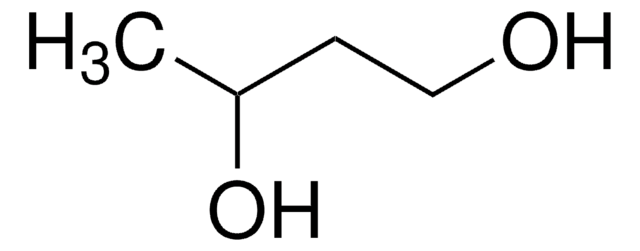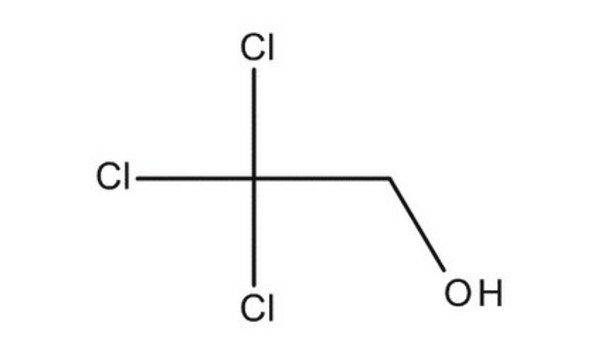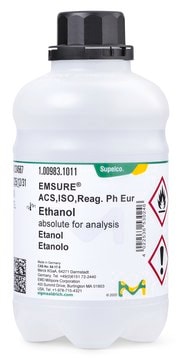推薦產品
蒸汽密度
2.14 (vs air)
蒸汽壓力
0.01 mmHg ( 20 °C)
API 家族
diethylene glycol
自燃溫度
442 °F
expl. lim.
2-12.3 %
製造商/商標名
USP
折射率
n20/D 1.447 (lit.)
bp
245 °C (lit.)
mp
−10 °C (lit.)
密度
1.118 g/mL at 25 °C (lit.)
應用
pharmaceutical (small molecule)
形式
neat
SMILES 字串
OCCOCCO
InChI
1S/C4H10O3/c5-1-3-7-4-2-6/h5-6H,1-4H2
InChI 密鑰
MTHSVFCYNBDYFN-UHFFFAOYSA-N
尋找類似的產品? 前往 產品比較指南
相關類別
一般說明
本品按现行药典规定交付。所有为支持本产品而提供的信息,包括SDS和任何产品信息单均由药典颁发机构制定并发布。如需进一步信息和支持,请访问现行药典网站。
應用
Diethylene glycol USP reference standard, intended for use in specified quality tests and assays as specified in the USP compendia. Also, for use with USP monographs such as:
- Propylene Glycol
- Glycerin
- Polyoxyl 40 Hydrogenated Castor Oil
- Sorbitol Solution
- Polyethylene Glycol 3350
- Maltitol Solution
- Noncrystallizing Sorbitol Solution
分析報告
这些产品仅供测试和分析使用。它们不适用于人类或动物的给药,不可用于诊断、治疗或治愈任何疾病。
其他說明
可能适用相应的销售限制。
訊號詞
Warning
危險聲明
危險分類
Acute Tox. 4 Oral
儲存類別代碼
10 - Combustible liquids
水污染物質分類(WGK)
WGK 1
閃點(°F)
280.4 °F - closed cup
閃點(°C)
138 °C - closed cup
客戶也查看了
Glycerin
United States Pharmacopeia and National Formulary
United States Pharmacopeia, 28(4), 2123-2123 (2020)
Nestor R Sosa et al.
Annals of emergency medicine, 64(1), 38-47 (2014-01-21)
Diethylene glycol is a toxic industrial solvent responsible for more than 13 mass poisonings since 1937. Little is known about the clinical spectrum, progression, and neurotoxic potential of diethylene glycol-associated disease because of its high mortality and the absence of
Joshua G Schier et al.
Journal of public health policy, 30(2), 127-143 (2009-07-15)
Diethylene glycol (DEG), an extremely toxic chemical, has been implicated as the etiologic agent in at least 12 medication-associated mass poisonings over the last 70 years. Why DEG mass poisonings occur remains unclear. Most reports do not contain detailed reports
Leo J Schep et al.
Clinical toxicology (Philadelphia, Pa.), 47(6), 525-535 (2009-07-10)
Diethylene glycol (DEG) is a clear, colorless, practically odorless, viscous, hygroscopic liquid with a sweetish taste. In addition to its use in a wide range of industrial products, it has also been involved in a number of prominent mass poisonings
J L Hébert et al.
La semaine des hopitaux : organe fonde par l'Association d'enseignement medical des hopitaux de Paris, 59(5), 344-349 (1983-02-03)
Although acute poisoning with ethylene glycol (EG) used in antifreeze mixtures is well known in man, only a few reports have described acute intoxication with diethylene glycol (DEG) and only one has mentioned oxaluria. Furthermore, there is no experimental evidence
條款
99%; Glycerol, ≥99.5%; Tetraethylene glycol, 99%
我們的科學家團隊在所有研究領域都有豐富的經驗,包括生命科學、材料科學、化學合成、色譜、分析等.
聯絡技術服務









